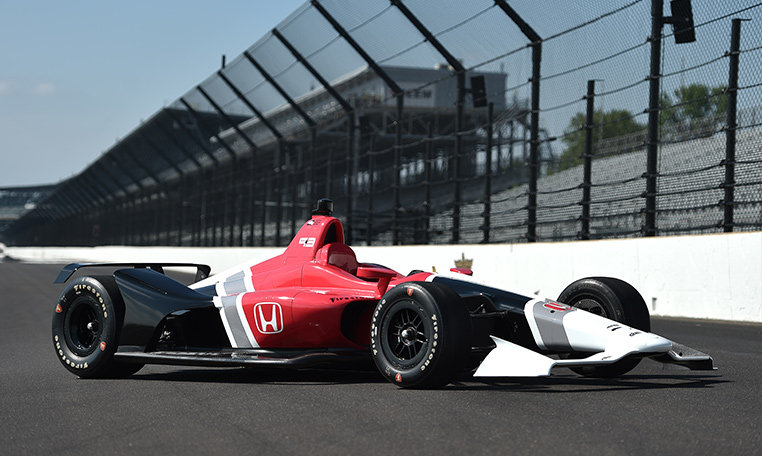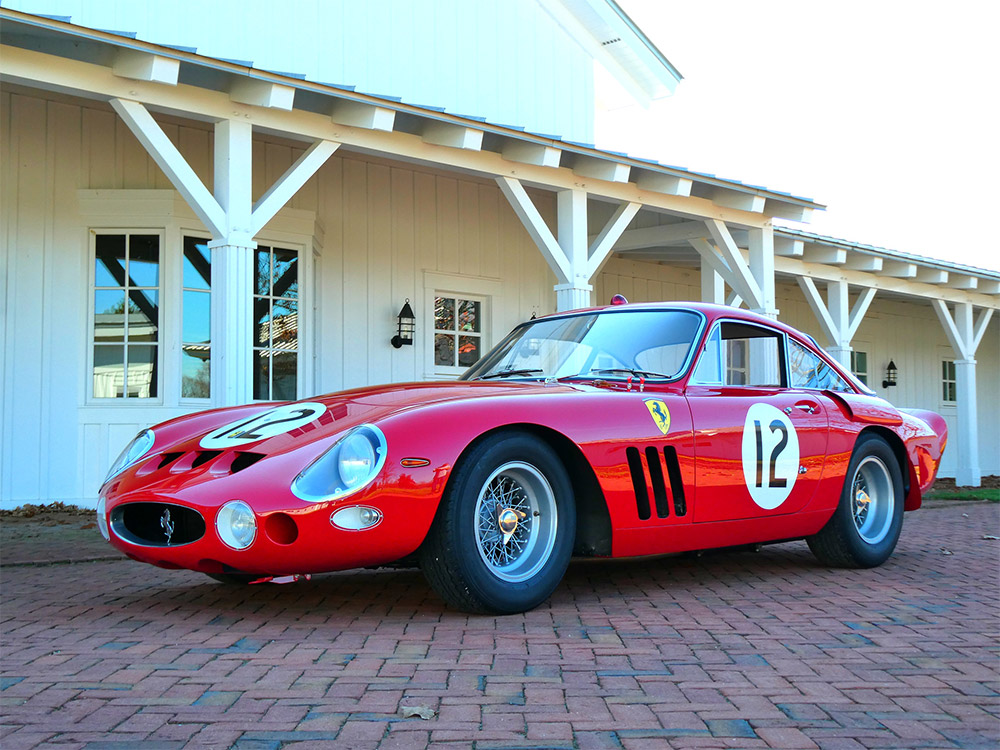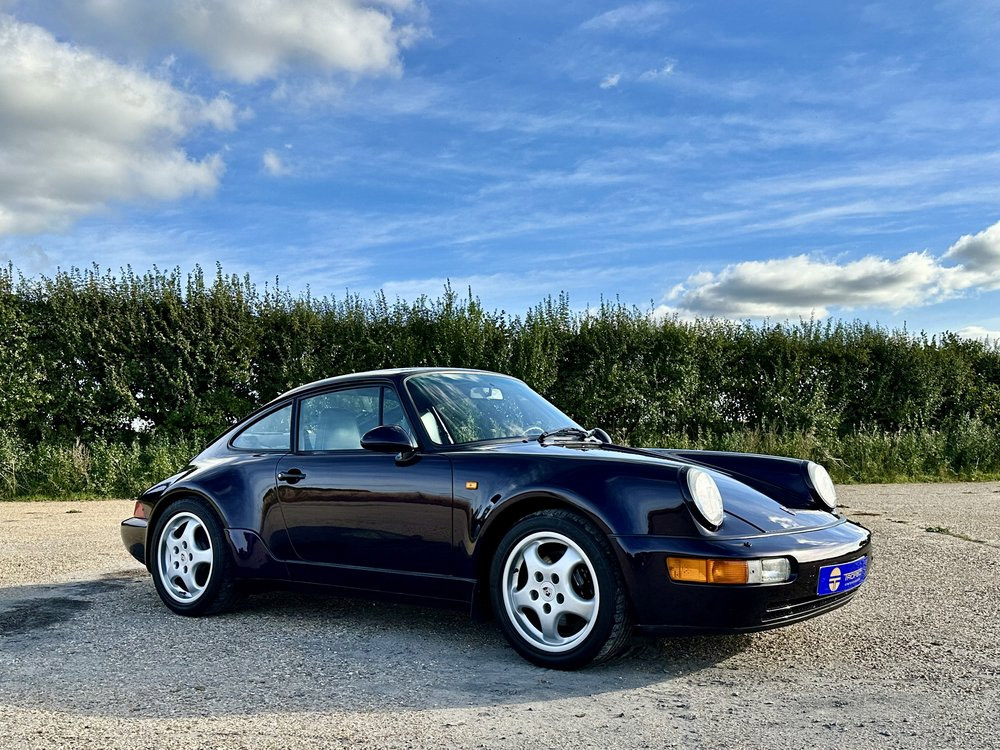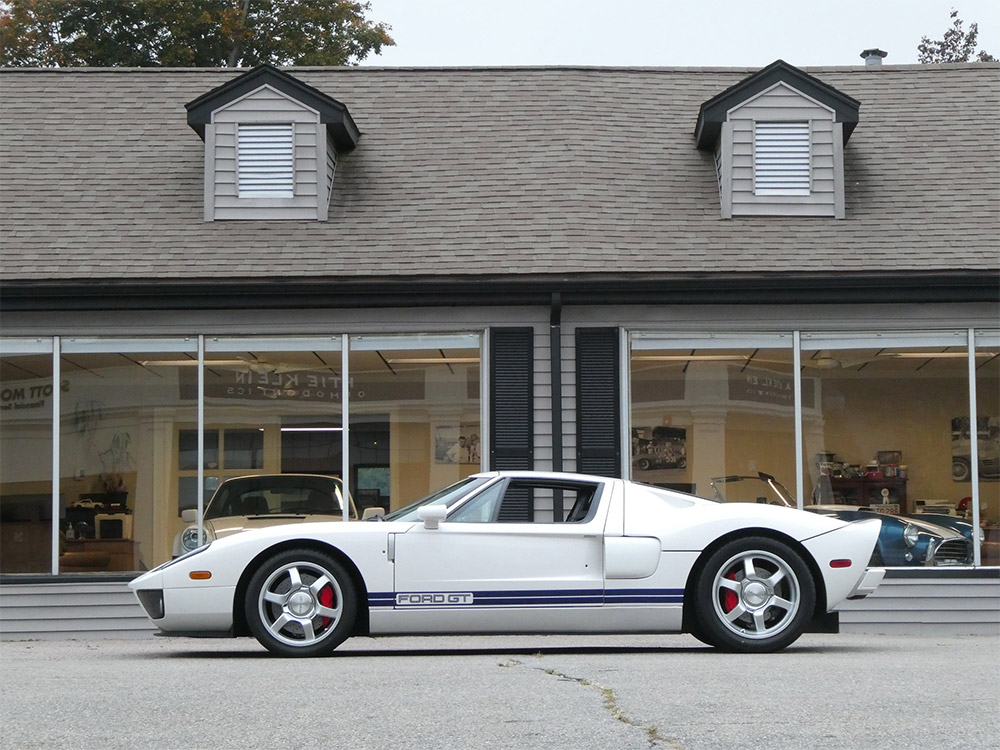Today, we get a look at the 2018 INDYCAR – a car with form and function.
This project of outfitting the current Dallara IR-12 chassis with a new aerodynamic kit began more than a year ago. Design support came from Dallara and Chris Beatty, a UK-based concept design and 3D animation consultant. Throughout the process, competitors contributed to the design progress.
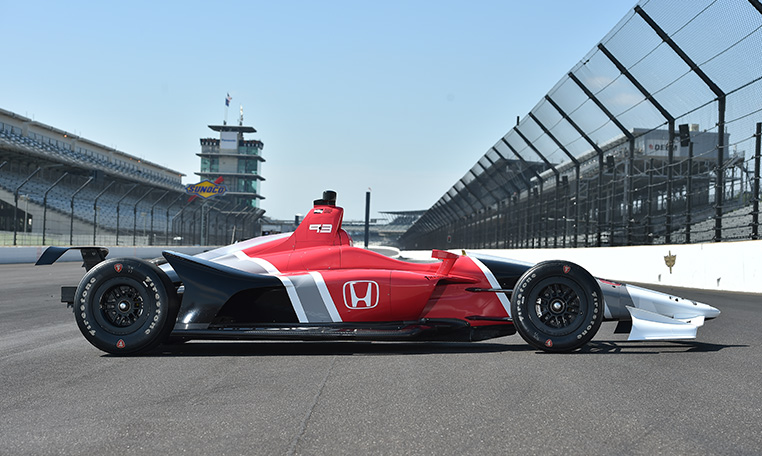
The public reveal of the concept began with drawings shown at the North American International Auto Show in Detroit in January. Indianapolis 500 champion Alexander Rossi was one of the drivers in attendance. “It looks like a real race car,” he said.
More images were shown in March, another batch in May. The car came into focus and anticipation grew. Dallara, which has supplied the IR-12 chassis to all Verizon IndyCar Series teams since 2012, was named in June to supply the universal kit as well, providing for a seamless merger of the two.
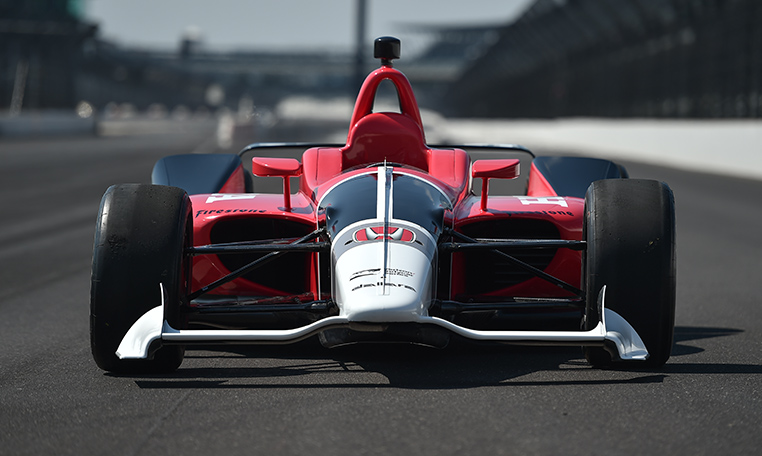
The 2018 INDYCAR is BOLDER
Fans of the sport liked the look of the low-line turbocharged Indy cars of the early 1990s, and that sentiment inspired the design of this car. The goal was to give the car a sleek look reminiscent of those popular cars while offering an attractive edge to a new generation of drivers and fans.
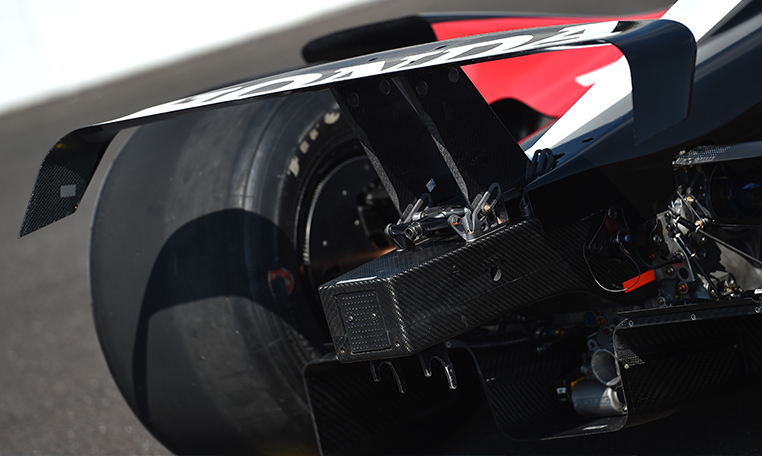
A lower engine cover and lower short oval/road course rear wing endplates provide a long, lean look. Gone are the rear wheel guards, which made the car appear bulky.
The wings are lower, smaller and more aesthetically pleasing.
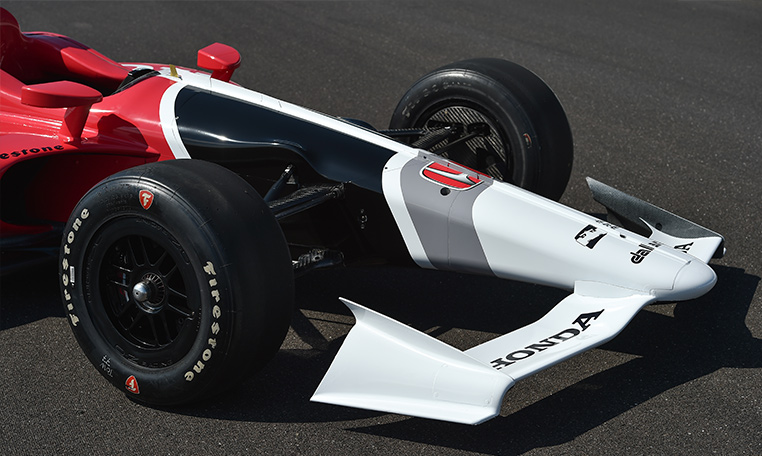
The LED display system on each car – which currently shows position in the running order, the time of a pit stop and when push-to-pass is engaged – is more sophisticated, expanding opportunities for providing fans with content.
The fan experience was taken into account with new camera positions strategically placed on the car. Views will be available from the nose and rear attenuator in addition to the traditional overhead and rear-view mirror locations.
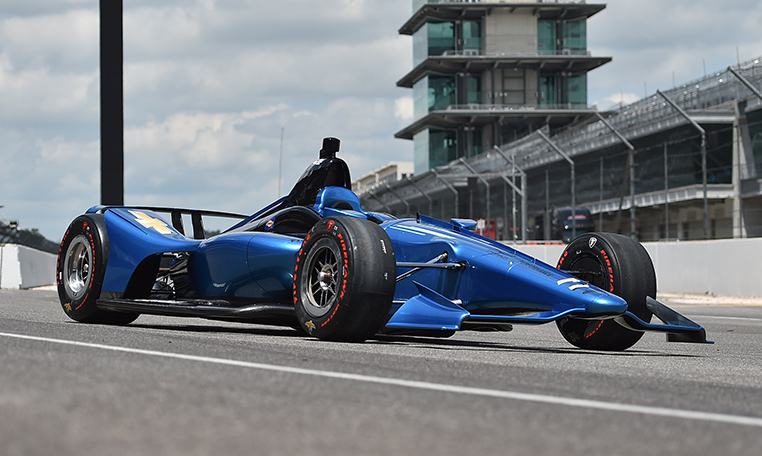
The 2018 INDYCAR is SAFER
INDYCAR and Dallara have six years of collective research and study with the IR-12 chassis to help understand the limits of control. This information is included in the design of the new car.
Side impact protection has been significantly improved in a variety of ways, including the sidepod leading edge and induct duct joined with two bulkheads to create a proper crushable structure ahead of the radiator. The unitary construction is designed to absorb loads from all directions, and the structure is 8 to 10 inches wider at the driver’s hips.
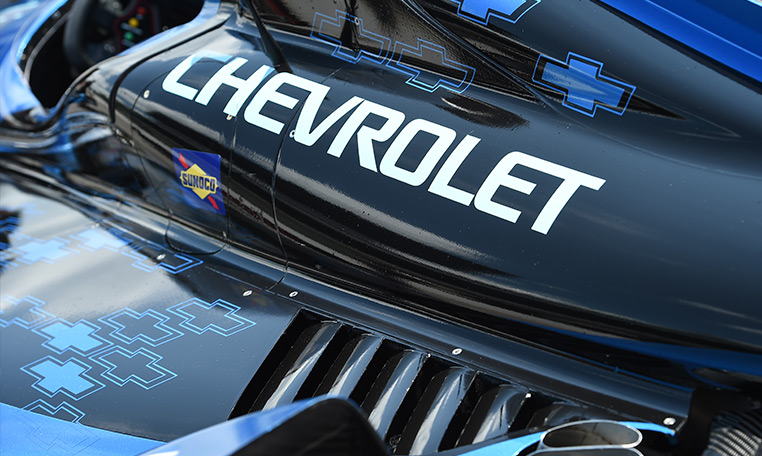
The top of the sidepod has been designed to exceed FIA side impact tests. The inlet duct, sidepod side and bottom have been constructed in hybrid carbon/dyneema fibers for improved penetration protection. Oil and water radiators have been moved forward, adding cushioning on the driver’s side.
Other improvements are:
- A wider leading edge mitigates the chance of another car’s wheel climbing on top of the underwing.
- The front wings are noticeably smaller with fewer pieces, reducing the amount of potential debris in incidents. Fewer pieces also means less to maintain.
- The rear wheel guards have been removed – therefore, the winglets have been removed.
- Fences in the rear of the underbody have been added to the road course/short oval package.
- The design has allowed for a cockpit windscreen application, when developed.
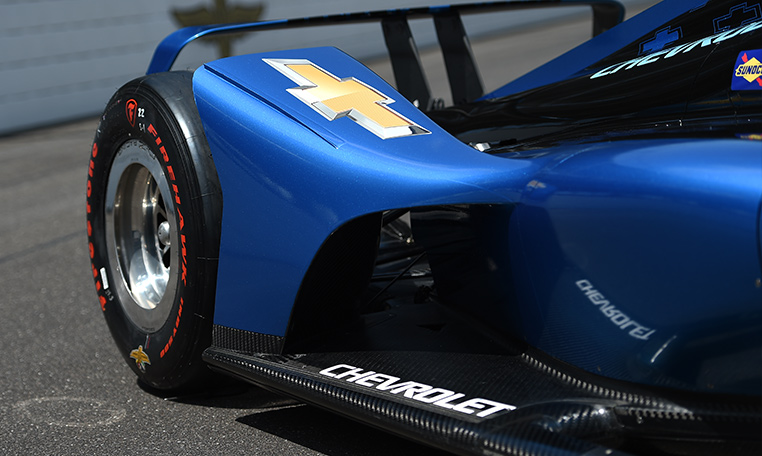
The 2018 INDYCAR is MORE THRILLING
The current 2.2-liter, twin-turbocharged V-6 engines from Chevrolet and Honda will continue to be used. Modeling indicates oval-track qualifying speeds at Indianapolis Motor Speedway should be comparable to 2017 Indianapolis 500 speeds. Given the car will be lighter, higher speeds than previously seen at some venues are possible.
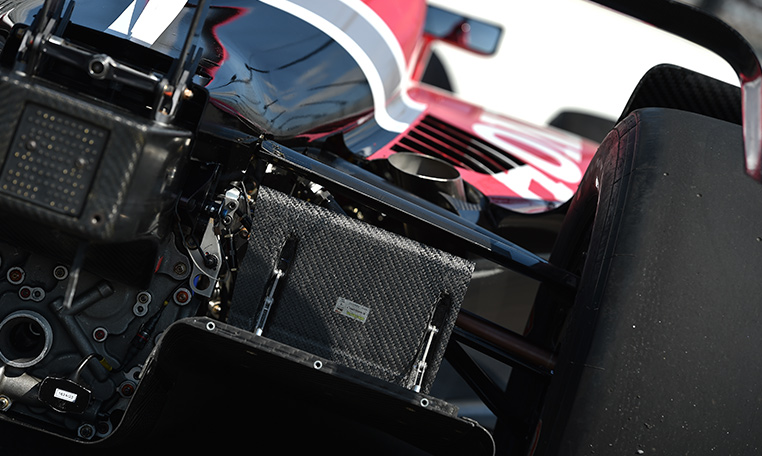
Drivers have been asking for the car to generate more downforce from underneath the car instead of on top using the wings. Now, 66 percent of the generated downforce will be at the bottom of the car in road course/short oval configuration, an increase of 19 percent.
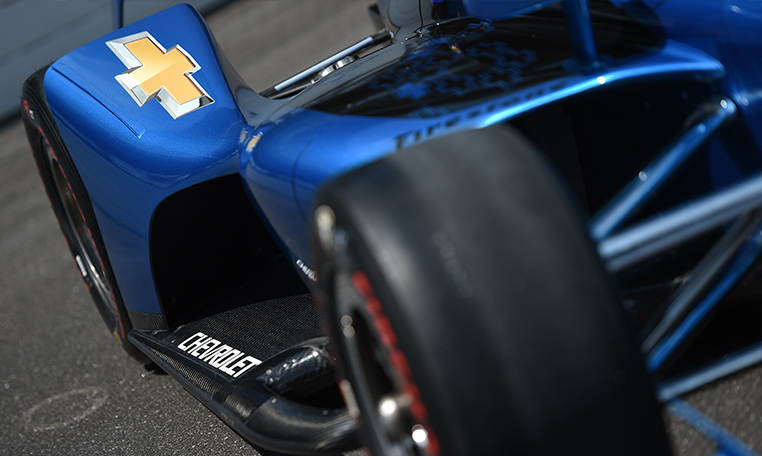
Reducing the dependency on topside downforce has eliminated the need for many of the extra aero kit pieces, which added to the turbulent air an Indy car leaves in its wake. At a recent short oval test where some of the new kit’s components were affixed to a current car, the following distance for a trailing car was cut in half, improving maneuverability. If it’s easier to follow, it should be easier to pass, creating an opportunity for tighter, more exciting racing.
Drivers have long been asking for the car’s weight to be moved forward for improved handling. This design has accomplished that.
Veteran drivers Juan Pablo Montoya and Oriol Servia have been tabbed to drive the two cars – one for each engine manufacturer – throughout the testing regimen operated by INDYCAR. Team Penske is providing the Chevrolet-powered car for Montoya; Schmidt Peterson Motorsports the Honda-powered chassis for Servia.


